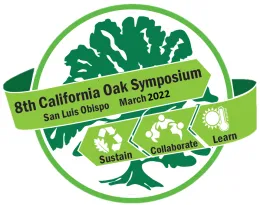#22

Long-term monitoring of mixed oak woodlands for goldspotted oak borer host preference and spatiotemporal patterns in host colonization
Adrian L. Poloni, Inland Empire Resource Conservation District (IERCD)
Stacy M. Hishinuma, Forest Health Protection, USDA Forest Service; Alex Chacon, Inland Empire Resource Conservation District (IERCD); Kevin Harrington, Inland Empire Resource Conservation District (IERCD); Sam Nielsen, Inland Empire Resource Conservation District (IERCD); Kim Corella, California Department of Forestry and Fire Protection (CAL FIRE)
Oak woodlands throughout southern California continue to experience accelerated oak mortality due to the introduction of the goldspotted oak borer (GSOB), Agrilus aurogutattus. In its invasive range in California, this exotic wood boring beetle prefers to infest and kill large diameter California black oak, Quercus kellogii, and coast live oak, Q. agrifolia. Interior live oak, Q. wislizeni, is not considered to be a significant host in the beetle’s current distribution. There are no data on the current and potential impact of GSOB on hybrid oaks. In fall of 2021, ground surveys were conducted in Edgar Canyon (Yucaipa, San Bernardino County, California) to document the health of the individual oak trees and the severity of GSOB infestation within a 165-acre area. Within this property are Q. chrysolepsis Q. agrifolia, Q. kelloggii, Q. wislizeni, and oracle oak (Quercus x morehus), a cross between a preferred host (Q. kelloggii) and a non-preferred host (Q. wislizeni). The goals of the study were to (1) establish long-term monitoring of individual trees to investigate individual tree characteristics associated with GSOB infestation in several species of oaks, (2) document spatiotemporal dynamics of GSOB infestation in mixed oak stands, and (3) to investigate characteristics of hybrid oaks infested by GSOB that may be correlated with infestation severity. For all oak trees within the study area, diameter at breast height (DBH), crown dieback, tree height, tree crown height, damage by other agents, bark thickness, and signs and symptoms of A. auroguttatus infestation and injury (number of exit holes, bark staining and woodpecker feeding) were recorded and all trees were tagged and georeferenced. This survey represents the first year of observations in the long-term monitoring of individual native oaks in the project area and the first documented investigation of the impact of A. auroguttatus on oracle oaks.
